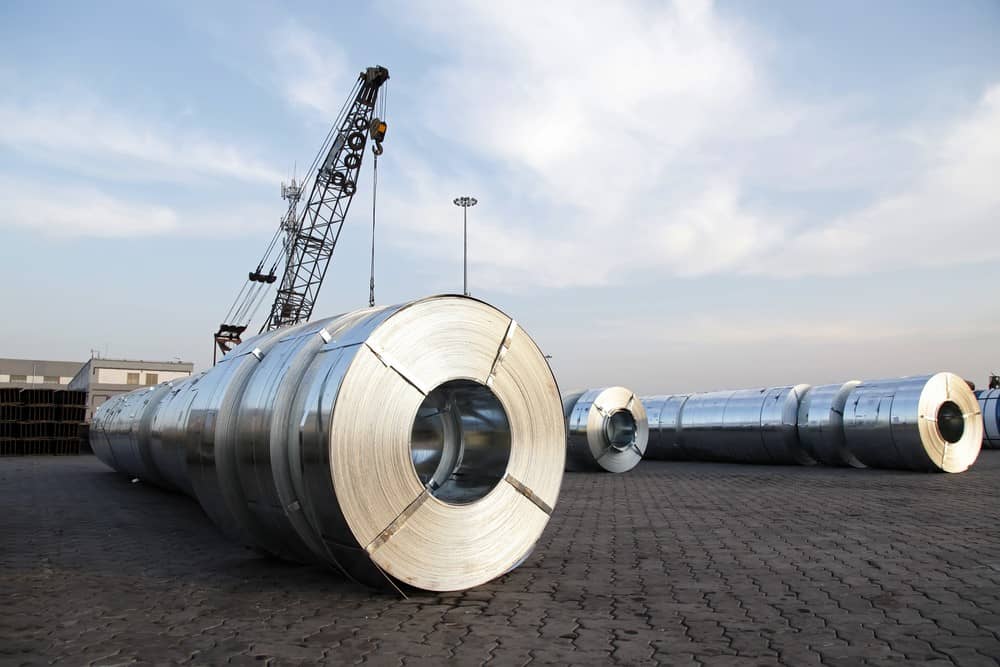Hot-dip galvanized steel has been around since 1742. In the nearly-280 years since a French chemist named Paul Jacques Moulin first described the galvanizing process, fabricators and construction engineers all over the world have gathered a tremendous amount of evidence on the durability of galvanized steel. But the million-dollar question — or depending on the size of your project, maybe the $10 million or $100 million question — is how long does galvanized steel last?
ASTM International, formerly known as the American Society for Testing and Materials, has a precise answer for this critical question.
Time to First Maintenance
Time to First Maintenance, or TFM, is defined as the appearance of rust on 5 percent of a galvanized steel surface. At this point, 95 percent of the steel surface is still covered with zinc but preventive maintenance is necessary to prevent deterioration of the structure.
TFM varies by thickness of the coating of zinc put on the steel during the galvanizing process and by the severity of pollution in the atmosphere to which the galvanized steel is exposed. Thinner zinc offers less protection. Industrial air pollution destroys zinc faster, but not very fast.
ASTM Standard A123 requires any galvanized steel more than 1/4-inch thick to be coated with at least 3.9 mm of zinc. According to the Time to First Maintenance Chart, steel treated with this thickness of zinc will reach TFM only after decades of service, depending on environment. (Here “environment” refers to relative air quality.)
- TFM for standard galvanized steel in an industrial environment is 72 to 73 years. Example of an industrial environment include Newark, Atlanta, and Houston.
- TFM for standard galvanized steel in a tropical marine environment is 75 to 78 years. Examples of a tropical marine environment include Miami and Mazatlan.
- TFM for standard galvanized steel in a temperate marine environment is 86 years. Examples of temperate marine environments are Seattle and Charleston, South Carolina.
- TFM for standard galvanized steel in a suburban environment is 97 years. Examples of a suburban environment include Minneapolis and Orlando.
- TFM for standard galvanized steel in a rural environment is over 100 years. Examples of a rural environment include Fargo, North Dakota and Las Cruces, New Mexico.
In locations with minimal air pollution, galvanized steel will not need maintenance for a full century or more! And because the Time to First Maintenance Chart is based on data collected since the 1920s, before major improvements in air quality, these longevity estimates for galvanized steel used for construction in the twenty-first century are likely to be conservative.
Cleaner Air = Longer Life = Higher ROI
Galvanized steel is a construction material for the truly long term. The longevity of galvanized steel is so well documented that financial planners can build expected TFM into their return on investment models for different sites and different real estate costs. The longevity of galvanized steel may give construction in a high-pollution location an acceptable ROI, but galvanized steel may justify long-term ROI at low-pollution sites that financial planners can find spectacular.
What Makes Galvanized Steel So Durable?
Don’t be misled by claims of manufacturers using other protective processes that their products last as long as galvanized steel. These claims are based on short-term tests, usually involving exposure of the steel to salt spray, that don’t run long enough to capture data about the three ways galvanized steel is protected against corrosion:
- Barrier protection. Zinc provides a molecularly dense protective coating over steel. Paint develops pin holes that leave it susceptible to underfilm corrosion. Zinc maintains a continuous coating that extends the life of the steel beneath it by 25 to 40 times.
- Cathodic protection. Rusting is an electrochemical process. Metals donate electrons to oxygen to form oxides. Iron, for example, donates electrons to oxygen to form iron oxide, or rust, that is, unless an electrical current keeps it from interacting with iron. When zinc is in physical contact with iron, it generates a tiny electrical current that interferes with the corrosion process. Zinc protects against water, acids, and salt.
- Patina protection. Even zinc slowly corrodes when it is exposed to air. The interaction of zinc and the oxygen in the air forms a thin layer of gel-like, slippery, viscous zinc hydroxide. As the zinc hydroxide dries out, it interacts with the carbon dioxide in the air to form a stone-like compound known as zinc carbonate. Crystals of zinc carbonate, or patina, offer yet another layer of protection for the steel beneath them.
Salt spray tests keep steel constantly wet so the protective patina never forms, at least for the duration of the test. In real-world applications, the protective layer of patina appears only after six to twelve months of exposure to the weather.
If you are looking for a competitively priced construction material that you can use to build or fabricate for generations to come, choose galvanized steel. There is no longer-lasting steel for your construction and fabrication needs.

